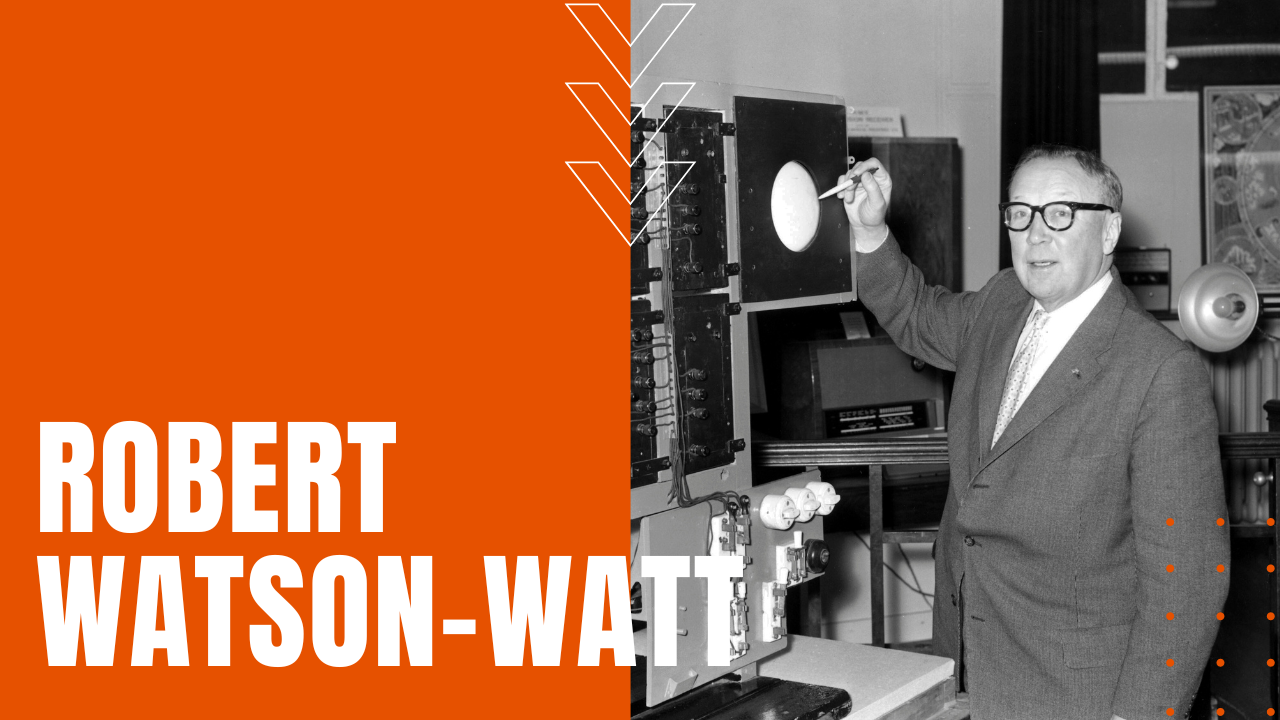Robert Watson-Watt

Born in 1892 Brechin Scotland, Robert Watson-Watt—a distant relative of James Watt, the inventor of the steam engine—became fascinated by radio waves while studying at the University College Dundee, before joining the Royal Aircraft Factory as a meteorologist in 1915, where he focused on using lightning-generated radio signals to locate thunderstorms, which proved to be first early warning system for aviators attempting to fly around dangerous weather.
Breakthrough in Long Range Detection
Lacking any method for recording and displaying his signals, in 1916, Watt proposed the use of a cathode ray oscilloscope, which became commercially available in 1923, allowing pilots and meteorologists to accurately pinpoint storms from several hundred miles away. After furthering his investigations at the Radio Research Station in Slough Scotland, in 1933, Watt was named superintendent of the National Physics Laboratory, promoted yet again a year later to head the newly-formed radio division at Teddington, where he learned about the Nazi’s attempts to develop a “death ray” weapon capable of destroying entire towns and cities from the air.
Chain Home is Born
With rising war fears sweeping through British government, the Tizard Committee and Commodore Hugh Dowding in particular asked Watt to develop a Radio Detection and Ranging system codenamed Chain Home, giving Watt and his small team of researchers five years to build a radar defense system along the eastern and southern coasts of Great Britain, capable of detecting enemy aircraft 50 miles off the English coastline. After testing his concept using short-wave radio deflection against a Handley Page Heyford bomber, Watt and company delivered a fully-functional Chain Home defense system by the end of 1938—in just seven month’s time—mere months before the outbreak of World War Two in 1939.
A Smashing Success
During the war, Watt’s Home Chain defense system proved instrumental in the defense of England during the nation’s 1940 victory in the Battle of Britain, while proving indispensable in ending the German Blitz of 1941. Knighted in 1942, Watt grew despondent over his perceived lack of acknowledge for his achievements, moving to Canada in the early 1960s, where he was pulled over for speeding during a visit to the United States, informing the radar-yielding police officer that, “Had I known what you were going to do with it, I would never have invented it.” home to Scotland in the late 1960s, he passed away on December 5th, 1973, making the life and contributions of Sir Robert Watson-Watt, a vital steppingstone behind the technological advancements of the mid-20th century.
